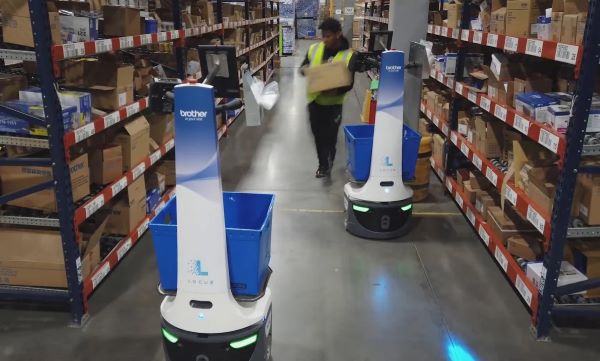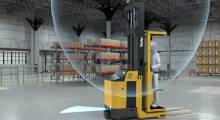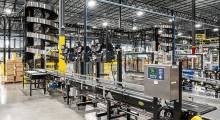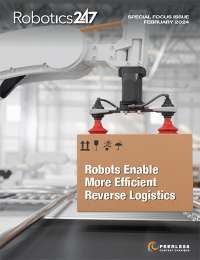After the COVID-19 pandemic, consumers expect e-commerce orders to be fulfilled the next day or even on the same day. This challenge has substantially elevated the importance of warehouse responsiveness in the supply chain.
Warehouse managers are facing increased pressure—and headaches—to improve operational efficiency, reduce costs, and meet deadlines—all while dealing with high turnover and other labor challenges. Many managers are feeling overwhelmed and, dare I say, miserable.
I can’t send you a painkiller for your headache, but I can show you that you’re not alone in your warehouse woes. There are tools that can help you ease your pain.
Five reasons for warehouse manager misery
- Ever-growing demands: The surge in e-commerce orders means that there are more products to stock, track, pick, pack, and ship than ever before. Meeting these demands requires meticulous planning and resource allocation.
- Human resource challenges: Warehouses often have high turnover rates, requiring constant training of new personnel—if managers can even find new people to hire. In addition, managers have to grapple with scheduling shifts, worker safety, and interpersonal conflicts.
- Mistakes and inefficiencies: Manual processes are prone to errors. Mispicking or misplacing an item can snowball into delayed shipments, customer complaints, returns, and restocking tasks, all of which affect the bottom line.
- Space constraints: With the increasing volume and variety of goods, many warehouses are running out of space. Efficient space utilization is becoming a constant puzzle for managers.
- Pressure to cut costs: Amidst all these challenges, there is the ever-present mandate to reduce your warehouse’s operational costs and improve margins.
So, what’s the solution? It’s not hiring more people, because you can’t find enough, and it’s not over-working the workers you do have.
You can augment existing workers and make their lives—and yours—better. You are not limited by your current facility footprint; autonomous mobile robots (AMRs) can help resolve your warehouse and fulfillment center challenges.
Fix your warehouse woes with robotic automation
Robotics is fast emerging as the way to optimize operations, reduce costs, and enhance efficiency, helping managers save their sanity.
Precision and accuracy: In the demanding world of warehousing, mistakes can have cascading effects on your entire supply chain. AMRs can work alongside humans and provide detailed information on items (including pictures) to be picked or put away, enabling impeccable accuracy. This strategy can dramatically decrease errors, speed up shipments, and dramatically reduce the headaches of returns and customer dissatisfaction.
Efficient space utilization: Warehouses are expensive to maintain, especially in prime locations. Making optimal use of every square inch of available space is critical.
If you can’t build out or move to a new location, the deployment of AMRs enables the innovative design opportunity to go vertical with mezzanines and pick towers. With the agility of AMRs, navigating tight and very narrow aisles becomes a breeze.
The outcome? The effective volume of your warehouse increases, enabling it to store more goods and increase pick density without needing to expand the facility’s footprint.
Increased throughput: The addition of AMRs to facilitate walking, carrying, and picking can enable human workers to operate much more efficiently, improving productivity and safety, and reducing cycle times.
Reduction in labor challenges: The warehousing industry often grapples with high turnover rates and the physical toll of push-pull injuries. AMRs take on physically demanding tasks and reduce or eliminate physical strain on human workers. By doing so, they not only decrease the risk of injuries, but also enhance employee morale and address the issue of high turnover.
Scalability for the future: The warehouse and fulfillment center landscape is ever-evolving, with periods of growth and expansion. Traditional warehousing solutions can often become a bottleneck during these phases and don’t provide any flexibility for scale.
However, with AMRs, scaling up becomes easier. As your business grows, you can integrate more robots into operations, which can be done quickly with robots-as-a-service (RaaS), enhancing your warehouse’s capabilities without drastic infrastructural changes.
As a warehouse manager, you have a full plate – in fact, it can often feel like it’s overflowing. Combining the everyday challenges of warehouse management with the increasing demand for quick and accurate fulfillment can make your role overwhelming. Warehouse automation offers an optimal solution to many of these problems.
AMRs and the Locus Solution from Locus Robotics can transform your warehouse into a streamlined, error-minimized facility that retains employees and improves the efficiency of daily operations. Augmenting your operations with robots will help your warehouse run like a well-oiled machine—without your having to reach for an aspirin.
About the author
Mary Hart is senior content marketing manager at Locus Robotics. This blog has been edited and is reposted with permission.
Article topics
Email Sign Up



















